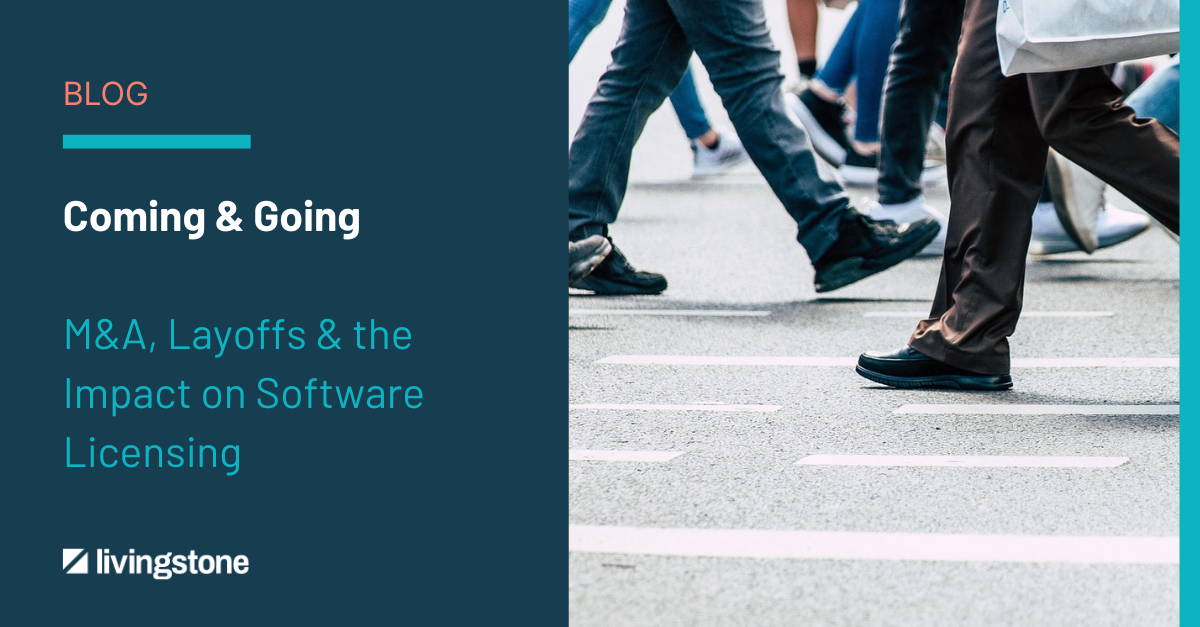Recent tariff policies from the Trump administration are causing market uncertainty. You might think that software products which are delivered digitally, and therefore not subject to tariffs, are immune to the challenges affecting many other industries. But there is a risk that software companies might use the tariff war as an excuse to increase prices, even if the direct impact on their costs is minimal. We look at how it could happen and what businesses can do about it.
How Software Companies Might Justify Price Hikes
Blaming Hardware and Operational Costs
One of the most immediate impacts of the new tariffs is the rise in prices for hardware components essential for running software applications. The Consumer Technology Association (CTA) projects that proposed tariffs could lead to substantial price rises. Despite Apple recently announcing a price cut to its Macbook Air, laptop prices are expected to increase by as much as 46%. While software itself isn’t tariffed, companies could argue that rising hardware costs are forcing them to adjust pricing.
Software companies often rely on hardware infrastructure for development, testing, and deployment of their products. Increased hardware costs can lead to higher operational expenses, which may be passed on to customers through increased software licensing fees.
Supply Chain Disruptions
The tariffs have also caused disruptions in global supply chains, affecting the availability of hardware components. Companies like Hewlett Packard Enterprise (HPE) have reported significant impacts due to these tariffs, leading to job cuts and revised profit forecasts. Such disruptions can delay hardware procurement, affecting timelines for software deployment and increasing indirect costs associated with software projects. Even if their core operations remain unaffected, software vendors might use broader supply chain issues as a reason for higher costs.
Bundling Changes
Many hardware purchases include bundled software or offer discounted licensing options. As hardware prices rise, the overall cost of these packages increases, potentially making them less attractive to consumers and businesses. Some companies may quietly adjust what’s included in standard licenses, forcing customers to pay more for features that were previously included.
Annual Price Adjustments
Many software vendors already increase prices annually. They may use the tariff war as a justification for larger-than-usual hikes.
What Businesses Can Do to Counteract This
While the recent escalation in tariffs is causing market disruption, organizations should keep following best practices for managing their software assets. These include:
Prepare for Audits
As financial uncertainty grows, vendors may ratchet up their focus on audits to bolster their revenue. Companies need to be prepared for this, knowing what they have paid for and what they’re using. Conducting their own internal audit before a vendor comes knocking, will also show where licenses are being underutilized, and where savings can be made.
Demand Transparency
Before renewing contracts, ask software vendors for a breakdown of why prices are increasing. If they cite tariffs, request specific details. Get the assistance of independent licensing experts like Livingstone to identify whether the price increases are valid.
Optimized Bill of Materials Before Renewals
Annual price increases are expected and if your organization is growing, you can expect your next software contract bill to be substantially bigger, regardless of any confusion around tariffs. By optimizing your bill of materials by, for example, profiling users, you can create a lean contract fit for purpose. Only start negotiations once you have done this prep work. Get the eBook on how to optimize your Microsoft contract.
Negotiate Multi-Year Agreements
Locking in multi-year pricing can help prevent unexpected hikes with fixed pricing protection. Multi-year agreements can also secure bigger discounts, avoid ‘stealth’ increases, and can provide negotiation leverage. However, when negotiating multi-year agreements, clarify renewal terms that don’t allow for automatic price increases after the initial term. Be sure to include price caps e.g. no more than a 3% increase a year, have flexible exit clauses with the option to exit or renegotiate, and watch for hidden fees around support or add-ons.
Tackle your tail-spend
Tail-spend can amount to millions. This is often made up of SaaS contracts that auto-renew without any real internal analysis. Tariff policies, and general increases in business costs, might see these auto-renewal prices going up significantly. Without active monitoring, this can end up being costly. Explore a service like Contract Intelligence and Tail Spend Management from Livingstone to get to grips with your tail-spend.
Look At Alternatives
While not always easy, if a provider raises prices unreasonably, consider switching to competitors or open-source alternatives. Also weigh up on-premises vs cloud options to determine which provides a more cost-effective solution.
Conclusion
While software products are not directly subjected to tariffs, the ripple effects of increased hardware costs, operational challenges, and supply chain disruptions can influence software licensing and costs.
Organizations need to be aware of these indirect impacts when planning their IT budgets and strategies. By staying proactive and questioning price increases, businesses can avoid unnecessary software cost inflation disguised as tariff-related adjustments.
Speak to the experts
Livingstone are Leaders in the Gartner Magic Quadrant for SAM Managed Services. Our team of optimization and negotiation specialists help organizations make every license count. Talk to us before signing a new software contract to ensure you are getting the best deal.




